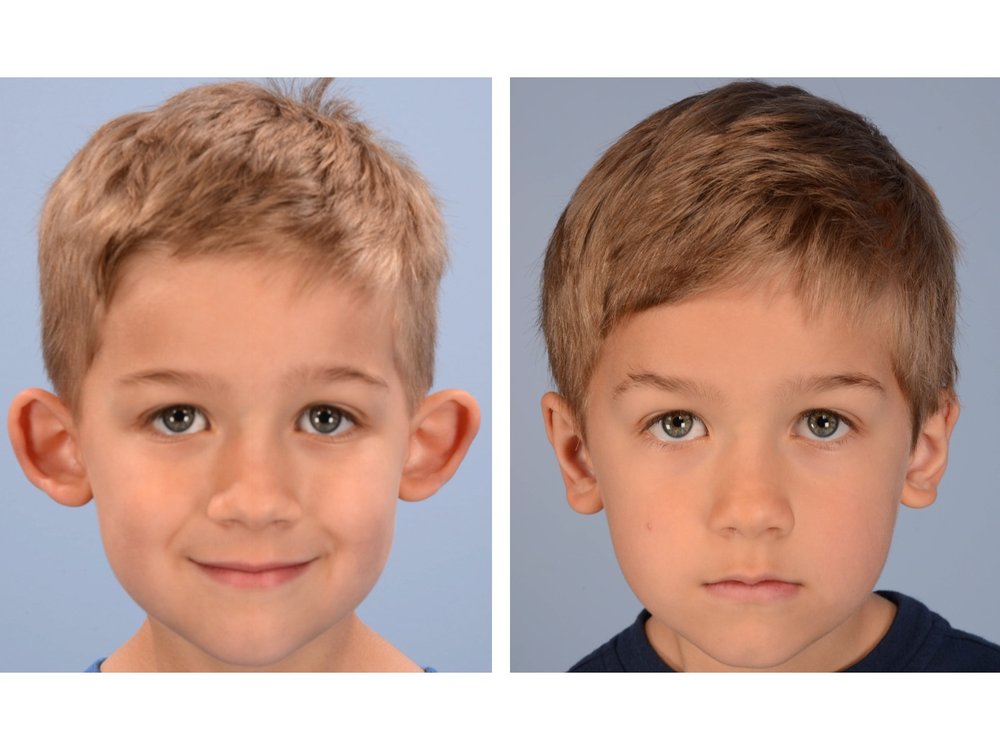Understanding the Otoplasty Procedure
Otoplasty Defined
Otoplasty, often referred to as ear surgery, corrects deformities and brings symmetry. It reshapes the cartilage to achieve a more natural look. This procedure is crucial for children facing bullying or self-esteem issues due to ear shape.
Children as young as five can undergo otoplasty. This age is ideal because the ear cartilage is stable enough for correction yet still malleable. Early intervention prevents psychological distress during formative years.
Age Matters
The typical age range for otoplasty in children is between 5 and 14 years old. Timing is critical. Performing the surgery at a younger age ensures better healing and less memory of the procedure.
Doctors recommend this timing for optimal results. It balances ear development with emotional well-being. Waiting too long can affect a child’s social interactions and self-confidence.
Cosmetic vs Reconstructive
There’s a significant difference between cosmetic and reconstructive otoplasty. Cosmetic otoplasty focuses on appearance enhancements, making ears look more proportionate or symmetrical.
Reconstructive otoplasty addresses more severe deformities or injuries. It requires intricate work on the ear’s structure. Both types aim to improve quality of life but differ in their objectives and complexity.
Preparing Your Child for Ear Surgery
Comforting Explanation
Parents play a crucial role in preparing their child for otoplasty. It’s vital to explain the procedure in a way that’s easy for them to understand. Focus on the positive outcome, like an improved ear shape, rather than the process itself.
Talk about how the surgery will make their ears look better and how quickly they’ll recover. Avoid mentioning words like “pain” or “scar” to keep the conversation light and reassuring.
Pre-Operative Tests
Before the surgery, your child will need several pre-operative evaluations. These might include blood tests and a physical examination to ensure they’re healthy enough for the procedure.
Discuss these tests with your child beforehand. Let them know these are routine checks to make everything goes smoothly.
Easing Anxiety
Surgery can be scary for both children and parents. Here are a few tips to reduce anxiety:
-
Visit the hospital or clinic before the day of surgery. This helps familiarize your child with the environment.
-
Bring their favorite toy or blanket on the day of surgery for comfort.
-
Stay calm and positive. Children often mirror their parents’ emotions.
The Role of Earband in Otoplasty
Earband Purpose
An earband plays a crucial role after otoplasty, especially for children. It helps maintain the new shape of the ears. Moreover, it protects the ears during recovery.
Children often find this band comfortable. It reduces swelling and aids in the healing process.
Duration of Use
Doctors usually recommend wearing the earband for several weeks post-surgery. The exact time can vary.
Most children need to wear it full-time for the first week. After that, they might only need it at night. This period ensures optimal healing.
Wearing Tips
Ensuring your child wears their earband as advised is vital. Here are some tips:
-
Explain its importance in a way they’ll understand.
-
Choose an earband that fits well and feels comfortable.
-
Praise them for following through with wearing it.
Surgery Day: What to Expect
Arrival Process
The day begins early at the hospital or clinic. Parents and their child will meet with the surgical team. They review the procedure again. This reassures both parents and child.
The Procedure
Once in the operating room, the child is given anesthesia for comfort. The surgeon then corrects the ear’s position, shape, or size. This usually takes a few hours. The goal is to achieve a natural look with minimal scarring.
Recovery Room
After surgery, the child moves to the recovery area. Here, they wake up from anesthesia. Nurses monitor vital signs closely during this time.
Discharge Instructions
Discharge often happens on the same day. Before leaving, parents receive detailed care instructions. These cover pain management and wound care for the coming days.
Home Care
At home, rest is crucial for healing. Pain is manageable with medication prescribed by the surgeon. Parents should ensure their child avoids touching or scratching the ears.
Post-Op Expectations
In the first week post-op, some swelling and discomfort are normal. Results become visible as the skin heals and swelling reduces. Parents play a key role in supporting their child through recovery.

Post-Surgery Care Essentials
Recovery Room
After the otoplasty, children wake up in the recovery room. They might feel groggy or confused at first. It’s crucial to keep them calm and comfortable. Nurses monitor their vital signs closely during this period.
In the recovery area, kids have bandages around their heads. These help shape the ears and protect them. Parents should ensure these stay dry and intact.
Bandages Care
The first few days post-operation require careful bandage management. Change them as advised by the surgeon. This prevents infection and aids healing.
If bandages get wet or loose, contact your doctor immediately. They might need replacing sooner than planned.
Pain Management
Pain is common after otoplasty. Administer pain medicine as prescribed to ease discomfort. Always follow the dosage instructions.
Don’t give aspirin to children unless recommended by a healthcare professional. It can increase bleeding risks.
Signs of Complications
Watch for signs of complications like excessive swelling, redness, or discharge from the stitches area. Fever is also a red flag.
Immediate medical attention is necessary if any of these symptoms appear. They could indicate an infection or other issues requiring prompt treatment.
Follow-Up Appointments
Follow-up appointments are vital for monitoring recovery progress. The surgeon checks the healing process, removes stitches if needed, and addresses any concerns.
These visits ensure complications are caught early and managed effectively. They’re an integral part of the recovery journey.
Recovery Journey After Otoplasty
Initial Weeks
The first few weeks post-otoplasty are crucial for children. They may experience mild discomfort and swelling, which typically diminishes within the first week. It’s important to follow the post-surgery care essentials closely during this period.
Doctors often recommend wearing a headband to support and protect the ears, especially at night. This practice should continue for about six weeks. Parents should ensure their child avoids any activity that might bend or harm the ears.
Activity Resumption
Returning to normal activities is a gradual process. Children can usually return to school after one week, given they avoid physical education and sports. Contact sports should be off-limits for at least one month to prevent injury to the healing ears.
Parents play a vital role in monitoring their child’s activities and ensuring they adhere to these restrictions. This cautious approach helps in avoiding complications and promotes better healing.
Emotional Support
Adjusting to changes post-otoplasty can be challenging for some children. They might feel self-conscious or anxious about their appearance or reactions from peers.
Open communication is key. Encourage your child to express their feelings and reassure them of their unique qualities. Celebrating small milestones in recovery can boost their confidence significantly.
Addressing Common Parental Concerns
Risk Factors
Parents often worry about the risks involved in otoplasty for their children. It’s important to know that complications are rare. The surgeon will discuss these risks, which can include infection or a reaction to anesthesia. Following post-operative instructions carefully minimizes these risks significantly.
Children usually bounce back quickly after surgery. They can return to school within a week, adhering to guidelines on physical activities.
Outcome Expectations
Parents also question what they can realistically expect from the surgery. Otoplasty offers permanent solutions for correcting ear deformities. This means that once healed, the ears will maintain their new position and form without needing further intervention.
It’s crucial for parents to understand that while the surgery corrects the physical aspect, it’s just part of boosting a child’s self-esteem.
Bullying and Self-Esteem
Dealing with bullying or self-esteem issues is a significant concern for many parents. Open conversations about feelings and experiences are vital.
Encourage your child to express how they feel about their ears before and after surgery. This helps them process any bullying incidents more healthily.
Choosing a Reputable Healthcare Provider
Surgeon Experience
It’s crucial to select a doctor with ample experience in otoplasty, especially for children. Board certification is a must. This ensures they have the necessary training and skills.
Parents should look for surgeons who frequently perform this procedure on pediatric patients. Their specific expertise reduces risks and increases the chances of a successful outcome.
Hospital Quality
The choice of hospital or clinic matters as much as the surgeon’s skill. High-quality facilities offer better care, reducing potential complications like infection or excessive blood loss.
They should provide comprehensive information about the procedure, including what to expect during recovery. Parents need to feel confident in the place where their child will stay, even if it’s just for a short period.
Consultation Questions
During consultations, parents must ask targeted questions. These can include:
-
How many otoplasties has the surgeon performed on children?
-
What kind of pain management is available?
-
Can they show before-and-after photos of previous pediatric patients?
-
What measures are in place to ensure a safe and comfortable recovery?
Asking such questions helps gauge the surgeon’s experience and approachability. It also gives insights into how well they understand the unique needs of young patients.
Final Remarks
Otoplasty can be a transformative journey for your child, enhancing not only their appearance but also boosting their confidence. You’ve learned about the procedure, from prep to recovery, and how choosing the right healthcare provider is crucial. It’s clear that with proper care and an understanding of what to expect, you can make this experience as smooth as possible for your little one. Remember, addressing your concerns early on with a trusted specialist will pave the way for a successful outcome.
Now’s the time to take the next step. If otoplasty feels right for your child, reach out to a reputable healthcare provider and discuss your options. Your child’s happiness and well-being are paramount, and taking action today could open the door to a brighter, more confident tomorrow. Don’t wait—start your journey towards a successful otoplasty now.
Frequently Asked Questions
What is otoplasty and who is it for?
Otoplasty, or ear surgery, is a procedure designed to change the shape, position, or size of the ears. It’s often recommended for children who have prominent ears to improve their appearance and boost self-confidence.
How can I prepare my child for otoplasty?
Start by having an open conversation about the procedure, emphasizing the positive outcomes. Ensure they understand what to expect and involve them in the preparation process to ease any anxiety.
What role does an earband play in otoplasty?
An earband is used post-surgery to support the newly shaped ears in their correct position, aid in healing, and minimize swelling. It’s a crucial part of the recovery process.
What should we expect on the day of surgery?
Expect a detailed pre-operative assessment followed by the surgery itself, which usually takes about 2-3 hours. Your child will be under general anesthesia during the procedure for comfort and safety.
What are some essential post-surgery care tips?
Key tips include ensuring your child wears their earband as advised, keeping their head elevated to reduce swelling, and following all prescribed aftercare instructions from your healthcare provider.
How long is the recovery journey after otoplasty?
Recovery varies but generally includes 1 week off from school or physical activities. Full healing and final results can be seen within 6 weeks, with continuous improvement over time.
How do I address common parental concerns about otoplasty?
Communicate openly with your healthcare provider about any concerns you have regarding risks, benefits, and expectations from otoplasty. They can provide valuable insights and reassurance based on experience and expertise.
Why is choosing a reputable healthcare provider important?
Selecting a skilled and experienced surgeon ensures your child receives high-quality care tailored to their specific needs. This choice significantly impacts the success of the procedure and overall satisfaction with the results.



